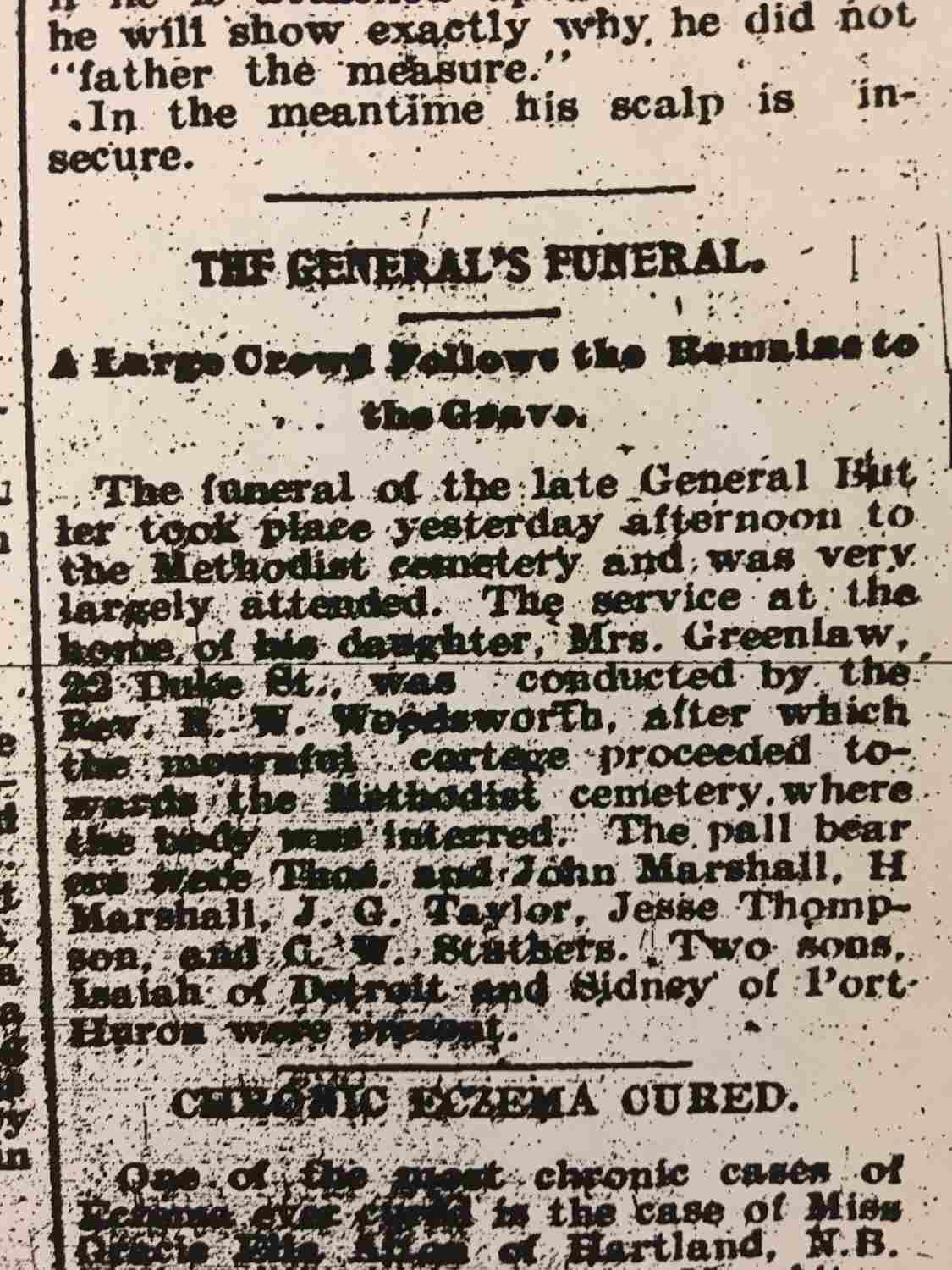General Butler
General Butler
A short biography on Woodstock resident and confectioner General Butler.
By Liz Dommasch, County Archivist
Born in 1923 in Dorcan County, Pennsylvannia, on the banks of the Susquehanna River, between the cities of Philadelphia and Harrisburg, William “General” Butler arrived in Woodstock with his family sometime before 1861. Over the next thirty plus years, he held many different occupations from labourer to cook to that of a white-washer (a person who whitewashes buildings to improve their appearance and repel rot). In 1861 he was a confectioner and operated a confectionary store and ice cream parlor on the site of the old Opera House, though later, his chief claim to fame came through the manufacturing of taffy of all kinds. In 1881, he placed the following advertisement in the Woodstock paper highlighting his services:
De ole hen am chirpin’
De robin am singin’
De voice of de rooster is heard in the land.
De pidgeons am flyin’
De ganders am sighin’
An the big Town Constable
Am showin his hand.
De md’s growin’ depper
De sewers a diggin’
De rats am comin’ out of the cellar to see.
De lambs am a callin:
De spring calf am bawlin’
An the white-wash season is open for me.
Wheneber you’re feeling’
It’s time for house-cleanin’
Jes send round your boy
For the General, that’s me
May office is down below
De Port Dover Railrow
On the fust street, turn norf come and see.
The General.
The General was also considered a great story-teller, as well as a well-known weather prophet. When he passed away in February 1899 the newspaper noted that “The General’s figure will be greatly missed upon the streets of Woodstock and citizens of all ages will note with regret the passing of another familiar character, one who in his long life had made himself popular by his good nature and quaint humor.”
Although both his passing and his funeral made the front page of the Woodstock Sentinel-Review, it would be remiss of me to not mention the tone and language used in describing him. General Butler was a person of colour and even though he was a successful businessman and a well-known figure in the community, his character was considered within the confines of the colour of his skin. In fact, the article contained racial discrimination by stating that “It is seldom that one meets with one of the coloured race as bright as the late General Butler, especially considering his age”. The newspaper article also appears to romanticize the idea that he served as a slave while in the South until an opportunity presented itself to escape to Canada. However, research conducted years later by Joyce Pettigrew and published in her book A Safe Haven: The Story of the Black Settlers of Oxford County (2006) notes that he was born in Pennsylvania and in his youth his family moved to Milfern County where Butler’s father owned 75 acres of mountain land. She also notes that following his teenaged years he worked on  numerous boats at the headwaters of the Susquehanna River before eventually making his way to Canada and Woodstock.
numerous boats at the headwaters of the Susquehanna River before eventually making his way to Canada and Woodstock.
One cannot delve into the history of Canada without noting that racism and inequality did and still does exist and as archivists and historians it is important that we acknowledge the good and the bad that comes with the past. As archivists, we make decisions that affect what gets collected, cataloged, exhibited and even researched. Because of that, our choices hold power to both include and exclude people, cultures and memories from the historical records we are responsible to preserve.
Events in 2020 were an important reminder of our responsibilities as archives to rethink past narratives in order to ensure that our collections represent the contributions, lives, work and memory of individuals of all races, ethnicities, and cultures that systemically have been missing in the history books or altered to fit a particular perspective. Moving forward it is important that we continue to educate ourselves and adapt our responses and practices accordingly. As February is Black History Month, we encourage others to read about the histories of local people of colour in Oxford County and to learn more about their contributions and achievements.
